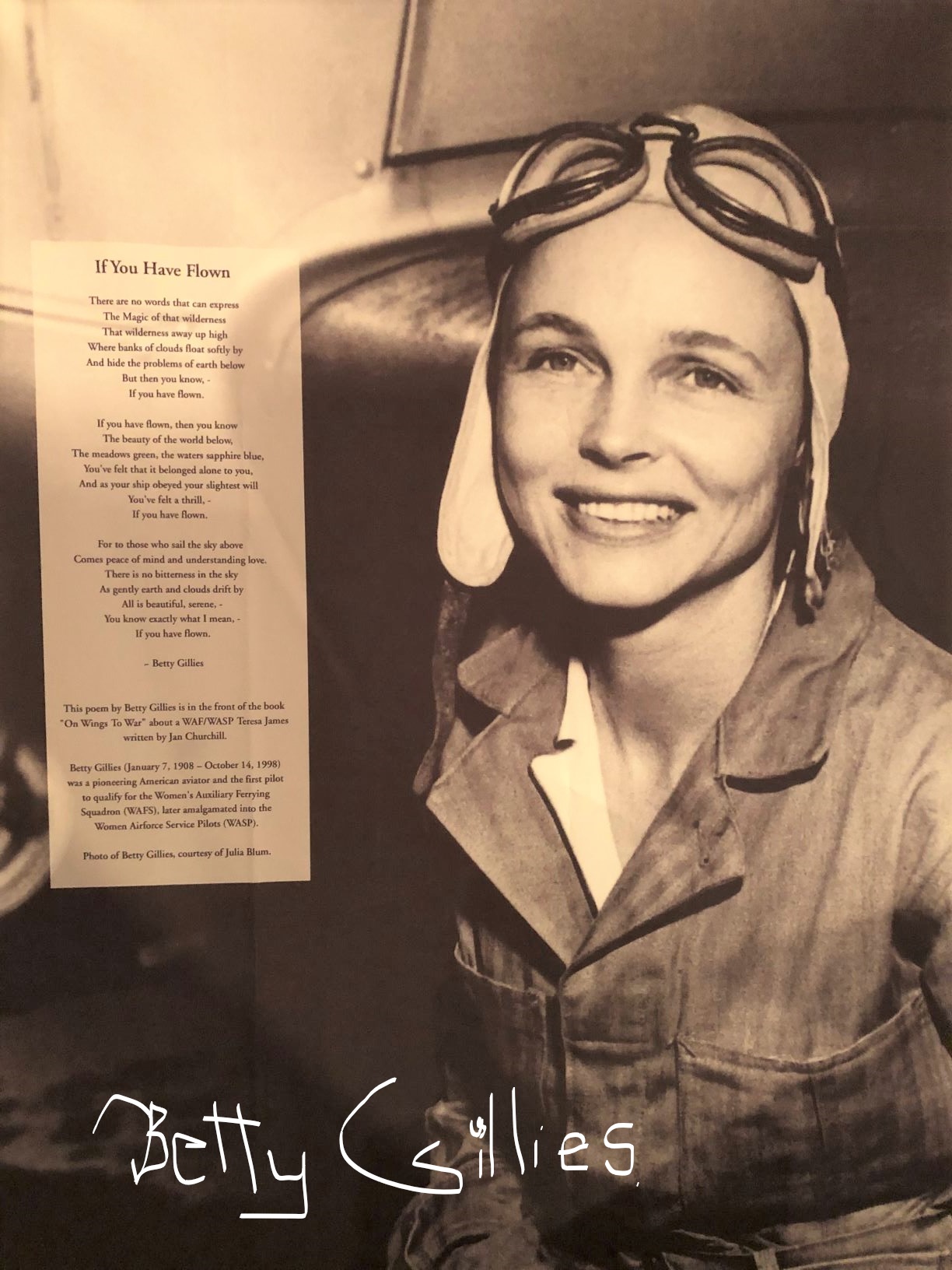It was my granddaughter’s freely running through the Women in Aviation Museum that drew me into its story. On her short legs, her little feet dancing through the exhibits, climbing into a cramped jet cockpit, her pink boots barely hanging over the edge of the seat, her wide eyes intrigued by the shiny dials. Was she experiencing a taste of the freedom that raced through Beryl Markham on her frequent jaunts across Kenya before she became the first woman aviator to fly solo across the Atlantic? “….I learned to wander, I learned what every dreaming child needs to know – that no horizon is so far that you cannot get above it or beyond it,” Markham wrote in her memoir West With the Night in 1942.
When we visited the museum, while my granddaughter was discovering aviation for the first time, I was close to completing 150,000 miles of business travel as a passenger for the year. My father was a pilot in World War II and, always curious but not serious about becoming a pilot myself, I had a brief taste of the requirements from the cockpit of a Piper Cub while pursuing a Girl Scout badge at the age of 12. I was caught up in the romance of being a pilot until I realized in that short trip how thin the margins between life and death in the hands of one person.
“In accomplishing the feat of flying, women broadened the traditional boundaries that had been set for their gender, attaining a sense of competency and achievement…,” according to Julia Laura Blum, Museum Archivist and Curatorial Assistant in the Self-Guided Tour brochure. Modern women in not so modern times.
“There are no words that can express/The Magic of that wilderness…away up high/You’ve felt that it belonged alone to you,” wrote pioneering aviator Betty Gillies, born in 1908 and the first WASP, in her poem, “If You Have Flown.”
As part of National Aviation History Month and celebration of the 90th Anniversary of the Ninety-Nines’ International Organization of Women Pilots first meeting on Nov. 2, 1929 at Curtiss Field, Valley Stream, NY, the Cradle of Aviation museum was celebrating the achievements of women in aviation through the years. That meeting was led by Amelia Earhart. Located at the former Mitchel Air Force Base in Garden City, NY, the Cradle of Aviation Museum features more than 75 air and space craft in 8 galleries covering 100 years of aviation. Referred to as the “cradle of aviation” by the 1920, Mitchel Air Force Base, together with Roosevelt Field and other fields on the Hempstead Plans were the site of many historic flights. The museum opened in 2002.
The interactive women’s gallery personalizes their experiences – their clothing, equipment, reminiscences illuminating compelling accomplishments as they boldly ventured out because of their passion and along the way made history. We’ve heard about Anne Morrow Lindbergh, Rosie the Riveter and Sally Ride, but what about Bessica Raiche, who in 1910 made the first solo flight by a woman in the United States, from Hempstead Plains? Or Elinor Smith, the youngest licensed pilot in the world at 16 (in 1928)? She flew under all four river suspension bridges, a feat never accomplished by another pilot. Or Bonnie Tiburzi, who in 1973 at the age of 24 became the first female pilot for American Airlines and for a major American commercial airline?
For a few moments, running through that museum with a toddler, I understood the freedom these women must have felt as they pushed through boundaries and were thrilled by their ambition. “The air takes me into its realm,” Beryl Markham wrote in West With the Night about one of her first solo trips in a two-seater over Africa. “Night envelops me entirely, leaving me out of touch with the earth, leaving me within this small moving world of my own, living in space with the stars.”

